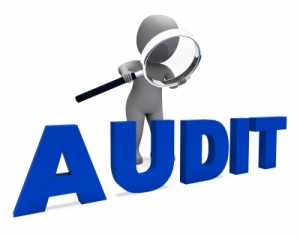
Are you ready to file these required forms? The LAST thing any employer wants is to be delinquent in the employer’s tax filing requirements. What is required and when?
..
December 31st marked the end of the fourth quarter of the calendar year. Fourth quarter employers’ reports due by January 31st. You must give your employees their W2 forms by January 31st. You must also give any independent contractors their Forms 1099 Miscellaneous by January 31st. Caution: Do NOT make the costly mistake of treating an employee as an independent contractor! Attention Employees – the next blog is devoted to YOU!
..
In addition to the W2 forms given to the employee, you must also send a copy to Social Security Administration (SSA) with the transmittal Form W3. If you withheld state taxes for the benefit of your employee, you must send a W2 copy to your state (with your state’s W3 equivalent). Form W3 must be filed with SSA by the last day of February. I tell my employer clients there is no penalty for filing early. If you file the W3 at the same time as you issue the W2 forms, you are more likely to file it on time. There is no real benefit in waiting to file these forms.
..
Most employers file the quarterly report Form 941 to report the taxes withheld from the employees’ paychecks. The taxes withheld include the employees’ federal income taxes, Social Security taxes and Medicare taxes. PLUS the employer matches the Social Security and Medicare taxes. If you are self-employed you are considered both employer and employee and you pay the full 15.3 percent of earnings.
..
You may be a small employer that has been given permission from the IRS to file an annual Form 944 instead of the quarterly Form 941. Form 944 is due by January 31st for the preceding calendar year’s wages paid.
..
In addition to Form 941 (or Form 944), Forms W2/W3 and state equivalent forms, you must also file (and pay) by January 31st, your 4th Quarter state income tax withholding report, file (and pay) your 4th Quarter state unemployment tax report, and file (and pay) your annual federal unemployment tax report Form 940. Only the first $7000 of wages paid to a covered employee is generally all that is subject to Unemployment tax. Remember to take into account any deposits you made during the earlier quarters for federal unemployment taxes.
To recap:
By January 31, 2014:
1. File Form 941 for the 4th quarter 2013 OR Form 944 for the whole year 2013
2. File your state’s 4th Quarter 2013 income tax withholding tax reports
3. File your state’s 4th Quarter 2013 unemployment tax report
4. File Form 940 for the whole year 2013 federal unemployment tax report
5. Give Forms W2 to your employees
6. Give Forms 1099 to your independent contractors
By February 28, 2014 :
1. Send Form W3 with Copy A of all Forms W2 to Social Security Administration
2. DO not mail the W3/W2 to IRS, it goes to SSA
3. Mail Form 1096 with IRS copy of Forms 1099 to the Internal Revenue Service.
4. 1096 is the form that goes to IRS
5. I’s OKAY to file these transmittal forms in January. You don’t have to wait till February 28th.
 This is NOT the 7th inning stretch that we are so familiar with in baseball. We are rounding third base and running home in the last month of the last quarter of this calendar year.
Will you be the winner in this tax game for 2014? Will the IRS be the winner when they select tax returns for examination? Did you realize that the returns the IRS will be selecting in 2015 will not be the 2014 tax returns. Most of the tax returns they will be selecting tax in 2015 will be tax returns for the year 2013.
Do you know where your 2013 tax return is? Do you have a method for saving the records you used for that prior year’s return? Do you know how long to keep those records? The answer to these big questions is just one of the areas I cover in my Audit Proofing Coaching program available in January. First enjoy your holidays. Then we can get to work to protect you from a tax audit.
Your 2013 tax return is also the starting point for preparing your 2014 tax return.
What do you want to make sure you finish before December 31st?
Here are THREE TIPS direct from the Internal Revenue Service for Individual Retirement Accounts.
“1. Know the limits. You can contribute up to a maximum of $5,500 ($6,500 if you are age 50 or older) to a traditional or Roth IRA. If you file a joint return, you and your spouse can each contribute to an IRA even if only one of you has taxable compensation. In some cases, you may need to reduce your deduction for traditional IRA contributions. This rule applies if you or your spouse has a retirement plan at work and your income is above a certain level. You have until April 15, 2015, to make an IRA contribution for 2014.
“2. Avoid excess contributions. If you contribute more than the IRA limits for 2014, you are subject to a six percent tax (emphasis, mine) on the excess amount. The tax applies each year that the excess amounts remain in your account. You can avoid the tax if you withdraw the excess amounts from your account by the due date of your 2014 tax return, including extensions.
“3. Take required distributions. If you’re at least age 70½, you MUST take a required minimum distribution, or RMD, from your traditional IRA. You are not required to take a RMD from your Roth IRA. You normally must take your RMD by Dec. 31, 2014. That deadline is April 1, 2015, if you turned 70½ in 2014. If you have more than one traditional IRA, you figure the RMD separately for each IRA. However, you can withdraw the total amount from one or more of them. If you don’t take your RMD on time you face a 50 percent excise tax (emphasis, mine) on the RMD amount you failed to take out.
If you turned 70½ in 2014 and delay your first annual RMD until the year AFTER you turn 70½, you must take that first RMD by April FIRST, 2015 (not the fifteenth) PLUS you must take the 2015 annual RMD before December 31, 2015. Watch the timeline to avoid the penalties and make the most of your retirement savings.
This is NOT the 7th inning stretch that we are so familiar with in baseball. We are rounding third base and running home in the last month of the last quarter of this calendar year.
Will you be the winner in this tax game for 2014? Will the IRS be the winner when they select tax returns for examination? Did you realize that the returns the IRS will be selecting in 2015 will not be the 2014 tax returns. Most of the tax returns they will be selecting tax in 2015 will be tax returns for the year 2013.
Do you know where your 2013 tax return is? Do you have a method for saving the records you used for that prior year’s return? Do you know how long to keep those records? The answer to these big questions is just one of the areas I cover in my Audit Proofing Coaching program available in January. First enjoy your holidays. Then we can get to work to protect you from a tax audit.
Your 2013 tax return is also the starting point for preparing your 2014 tax return.
What do you want to make sure you finish before December 31st?
Here are THREE TIPS direct from the Internal Revenue Service for Individual Retirement Accounts.
“1. Know the limits. You can contribute up to a maximum of $5,500 ($6,500 if you are age 50 or older) to a traditional or Roth IRA. If you file a joint return, you and your spouse can each contribute to an IRA even if only one of you has taxable compensation. In some cases, you may need to reduce your deduction for traditional IRA contributions. This rule applies if you or your spouse has a retirement plan at work and your income is above a certain level. You have until April 15, 2015, to make an IRA contribution for 2014.
“2. Avoid excess contributions. If you contribute more than the IRA limits for 2014, you are subject to a six percent tax (emphasis, mine) on the excess amount. The tax applies each year that the excess amounts remain in your account. You can avoid the tax if you withdraw the excess amounts from your account by the due date of your 2014 tax return, including extensions.
“3. Take required distributions. If you’re at least age 70½, you MUST take a required minimum distribution, or RMD, from your traditional IRA. You are not required to take a RMD from your Roth IRA. You normally must take your RMD by Dec. 31, 2014. That deadline is April 1, 2015, if you turned 70½ in 2014. If you have more than one traditional IRA, you figure the RMD separately for each IRA. However, you can withdraw the total amount from one or more of them. If you don’t take your RMD on time you face a 50 percent excise tax (emphasis, mine) on the RMD amount you failed to take out.
If you turned 70½ in 2014 and delay your first annual RMD until the year AFTER you turn 70½, you must take that first RMD by April FIRST, 2015 (not the fifteenth) PLUS you must take the 2015 annual RMD before December 31, 2015. Watch the timeline to avoid the penalties and make the most of your retirement savings.  This is NOT the 7th inning stretch that we are so familiar with in baseball. We are rounding third base and running home in the last month of the last quarter of this calendar year.
Will you be the winner in this tax game for 2014? Will the IRS be the winner when they select tax returns for examination? Did you realize that the returns the IRS will be selecting in 2015 will not be the 2014 tax returns. Most of the tax returns they will be selecting tax in 2015 will be tax returns for the year 2013.
Do you know where your 2013 tax return is? Do you have a method for saving the records you used for that prior year’s return? Do you know how long to keep those records? The answer to these big questions is just one of the areas I cover in my Audit Proofing Coaching program available in January. First enjoy your holidays. Then we can get to work to protect you from a tax audit.
Your 2013 tax return is also the starting point for preparing your 2014 tax return.
What do you want to make sure you finish before December 31st?
Here are THREE TIPS direct from the Internal Revenue Service for Individual Retirement Accounts.
“1. Know the limits. You can contribute up to a maximum of $5,500 ($6,500 if you are age 50 or older) to a traditional or Roth IRA. If you file a joint return, you and your spouse can each contribute to an IRA even if only one of you has taxable compensation. In some cases, you may need to reduce your deduction for traditional IRA contributions. This rule applies if you or your spouse has a retirement plan at work and your income is above a certain level. You have until April 15, 2015, to make an IRA contribution for 2014.
“2. Avoid excess contributions. If you contribute more than the IRA limits for 2014, you are subject to a six percent tax (emphasis, mine) on the excess amount. The tax applies each year that the excess amounts remain in your account. You can avoid the tax if you withdraw the excess amounts from your account by the due date of your 2014 tax return, including extensions.
“3. Take required distributions. If you’re at least age 70½, you MUST take a required minimum distribution, or RMD, from your traditional IRA. You are not required to take a RMD from your Roth IRA. You normally must take your RMD by Dec. 31, 2014. That deadline is April 1, 2015, if you turned 70½ in 2014. If you have more than one traditional IRA, you figure the RMD separately for each IRA. However, you can withdraw the total amount from one or more of them. If you don’t take your RMD on time you face a 50 percent excise tax (emphasis, mine) on the RMD amount you failed to take out.
If you turned 70½ in 2014 and delay your first annual RMD until the year AFTER you turn 70½, you must take that first RMD by April FIRST, 2015 (not the fifteenth) PLUS you must take the 2015 annual RMD before December 31, 2015. Watch the timeline to avoid the penalties and make the most of your retirement savings.
This is NOT the 7th inning stretch that we are so familiar with in baseball. We are rounding third base and running home in the last month of the last quarter of this calendar year.
Will you be the winner in this tax game for 2014? Will the IRS be the winner when they select tax returns for examination? Did you realize that the returns the IRS will be selecting in 2015 will not be the 2014 tax returns. Most of the tax returns they will be selecting tax in 2015 will be tax returns for the year 2013.
Do you know where your 2013 tax return is? Do you have a method for saving the records you used for that prior year’s return? Do you know how long to keep those records? The answer to these big questions is just one of the areas I cover in my Audit Proofing Coaching program available in January. First enjoy your holidays. Then we can get to work to protect you from a tax audit.
Your 2013 tax return is also the starting point for preparing your 2014 tax return.
What do you want to make sure you finish before December 31st?
Here are THREE TIPS direct from the Internal Revenue Service for Individual Retirement Accounts.
“1. Know the limits. You can contribute up to a maximum of $5,500 ($6,500 if you are age 50 or older) to a traditional or Roth IRA. If you file a joint return, you and your spouse can each contribute to an IRA even if only one of you has taxable compensation. In some cases, you may need to reduce your deduction for traditional IRA contributions. This rule applies if you or your spouse has a retirement plan at work and your income is above a certain level. You have until April 15, 2015, to make an IRA contribution for 2014.
“2. Avoid excess contributions. If you contribute more than the IRA limits for 2014, you are subject to a six percent tax (emphasis, mine) on the excess amount. The tax applies each year that the excess amounts remain in your account. You can avoid the tax if you withdraw the excess amounts from your account by the due date of your 2014 tax return, including extensions.
“3. Take required distributions. If you’re at least age 70½, you MUST take a required minimum distribution, or RMD, from your traditional IRA. You are not required to take a RMD from your Roth IRA. You normally must take your RMD by Dec. 31, 2014. That deadline is April 1, 2015, if you turned 70½ in 2014. If you have more than one traditional IRA, you figure the RMD separately for each IRA. However, you can withdraw the total amount from one or more of them. If you don’t take your RMD on time you face a 50 percent excise tax (emphasis, mine) on the RMD amount you failed to take out.
If you turned 70½ in 2014 and delay your first annual RMD until the year AFTER you turn 70½, you must take that first RMD by April FIRST, 2015 (not the fifteenth) PLUS you must take the 2015 annual RMD before December 31, 2015. Watch the timeline to avoid the penalties and make the most of your retirement savings. 

 I’m not talking vinyl music platters…I’m talking receipts. I’m talking about saving your business butt. I’m talking about saving your personal assets.
I was shocked when training with the Internal Revenue Service to find out that you (and me, too), the taxpayer, are considered GUILTY until you PROVE YOURSELF innocent. That was so against what I had grown up with in this great country of America, the land of Superman and Perry Mason.
Do you have what it takes to prove yourself innocent? How do you do that? Well, it’s very simple. It can also be considered boring drudgery, but it is your best defense. It’s called record keeping.
Did you know that thermal paper receipts will fade over time. It is guaranteed! That printed strip of paper showing the date, the place of purchase, the item purchased and the amount you paid is so clear when you first get it. But when you look at it later it has begun to fade. And if you need it to show the IRS one or two years later, it could be completely blank.
So how do you protect yourself with this paper that you need so badly? Put it in a copy machine and make a photocopy. Or scan it into your computer. If you have a paper copy, you will want a file folder or envelope or box to organize your papers. If you use a scanner, you will want to set up a folder on your computer so you know how to go back and find what you need later.
Is this necessary for everyone? Yes. If you own a business or are self-employed you have a business tax return to file. And every person who owns a business must also file a personal tax return.
It is important to keep your business records separate from your personal records. It is important to keep the records for one year separate from the records for another year.
Did you know that the biggest gangster in Chicago during the Roaring Twenties, the 1920s, did not go to jail for moonshining, or drug running, or gambling or prostitution? Elliott Ness of Untouchables fame, was really an IRS Agent. This famous gangster, Al Capone. went to jail for tax evasion. He did not keep track of his income and expenses. Or did he? He just didn’t put all of the right numbers on his tax return.
Years ago, on the 10pm TV news they used to say, “It’s 10 o’clock. Do you know where your children are?” And today I submit to you, It’s the last quarter of this year. Do you know what your numbers are? Do you know where that receipt is?
I’ll be asking my clients for all their numbers come tax season. Get a jump on it. Catch up on what you could have done earlier this year. I’ll be asking you for your true numbers and I want you to be ready. They are your best audit defense.
I’m not talking vinyl music platters…I’m talking receipts. I’m talking about saving your business butt. I’m talking about saving your personal assets.
I was shocked when training with the Internal Revenue Service to find out that you (and me, too), the taxpayer, are considered GUILTY until you PROVE YOURSELF innocent. That was so against what I had grown up with in this great country of America, the land of Superman and Perry Mason.
Do you have what it takes to prove yourself innocent? How do you do that? Well, it’s very simple. It can also be considered boring drudgery, but it is your best defense. It’s called record keeping.
Did you know that thermal paper receipts will fade over time. It is guaranteed! That printed strip of paper showing the date, the place of purchase, the item purchased and the amount you paid is so clear when you first get it. But when you look at it later it has begun to fade. And if you need it to show the IRS one or two years later, it could be completely blank.
So how do you protect yourself with this paper that you need so badly? Put it in a copy machine and make a photocopy. Or scan it into your computer. If you have a paper copy, you will want a file folder or envelope or box to organize your papers. If you use a scanner, you will want to set up a folder on your computer so you know how to go back and find what you need later.
Is this necessary for everyone? Yes. If you own a business or are self-employed you have a business tax return to file. And every person who owns a business must also file a personal tax return.
It is important to keep your business records separate from your personal records. It is important to keep the records for one year separate from the records for another year.
Did you know that the biggest gangster in Chicago during the Roaring Twenties, the 1920s, did not go to jail for moonshining, or drug running, or gambling or prostitution? Elliott Ness of Untouchables fame, was really an IRS Agent. This famous gangster, Al Capone. went to jail for tax evasion. He did not keep track of his income and expenses. Or did he? He just didn’t put all of the right numbers on his tax return.
Years ago, on the 10pm TV news they used to say, “It’s 10 o’clock. Do you know where your children are?” And today I submit to you, It’s the last quarter of this year. Do you know what your numbers are? Do you know where that receipt is?
I’ll be asking my clients for all their numbers come tax season. Get a jump on it. Catch up on what you could have done earlier this year. I’ll be asking you for your true numbers and I want you to be ready. They are your best audit defense. 





